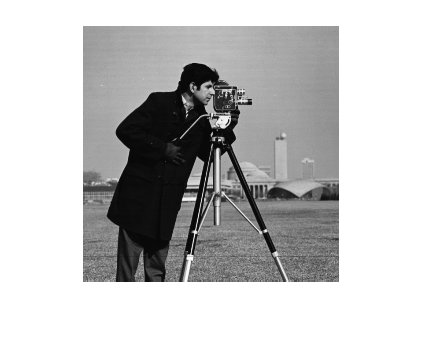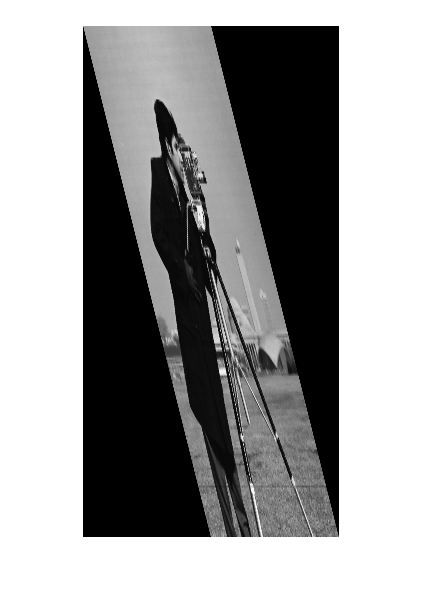maketform
Create N-D spatial transformation structure (TFORM)
The maketform function is not recommended for 2-D and 3-D geometric
transformations. For more information, see Version History.
Syntax
Description
Create N-D Affine and Projective Transformations from Matrices
T = maketform("affine",A)T for an N-dimensional
affine transformation specified as matrix A. The transformation
structure T has both forward and inverse transformations.
A spatial transformation structure (called a TFORM structure) can
be used with the tformarray, tformfwd, and tforminv functions.
Create Transformation from Forward or Inverse Functions
T = maketform("custom",ndims_in,ndims_out,forward_fcn,inverse_fcn,tdata)TFORM structure T based on
user-provided function handles and parameters. ndims_in and
ndims_out are the numbers of input and output dimensions.
forward_fcn and inverse_fcn are function
handles to forward and inverse functions. The tdata argument can be
any MATLAB® array and is typically used to store parameters of the custom
transformation. It is accessible to forward_fcn and
inverse_fcn via the tdata field of
T.
Create Transformation for Spatial Referencing
T = maketform("box",tsize,outCornerStart,outCornerEnd)TFORM structure T
that maps an input box defined by the coordinates of a corner,
ones(1,N), and size tsize, to an output box
defined by the opposite corners outCornerStart and
outCornerEnd. The "box"
TFORM structure is typically used to register the row and column
subscripts of an image or array to some world coordinate system.
T = maketform("box",inCorners,outCorners)TFORM structure T.
The transformation maps an input box defined by the opposite corners
inCorners(1,:) and
inCorners(2,:) to an output box defined by the
opposite corners outCorners(1,:) and
outCorners(2,:).
Create Composite Transformation
T = maketform("composite",T1,T2,...,TL)TFORM structure T that is a composite of
transformations T1, T2, ..., TL specified as comma-separated
TFORM structures. The forward and inverse functions of
T are the functional compositions of the forward and inverse
functions of the component transformations T1, T2, ..., TL.
T = maketform("composite",[T1,T2,...,TL])TFORM structure T that is a composite of
transformations T1, T2, ..., TL specified in a vector. The forward and
inverse functions of T are the functional compositions of the forward
and inverse functions of the component transformations T1, T2, ...,
TL.

